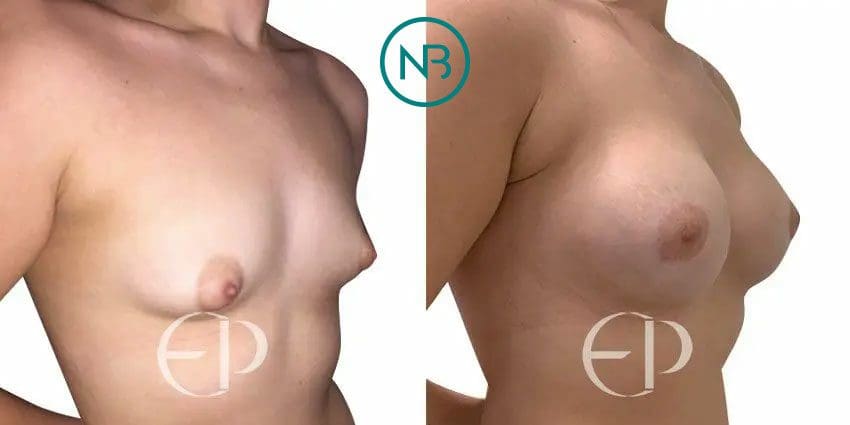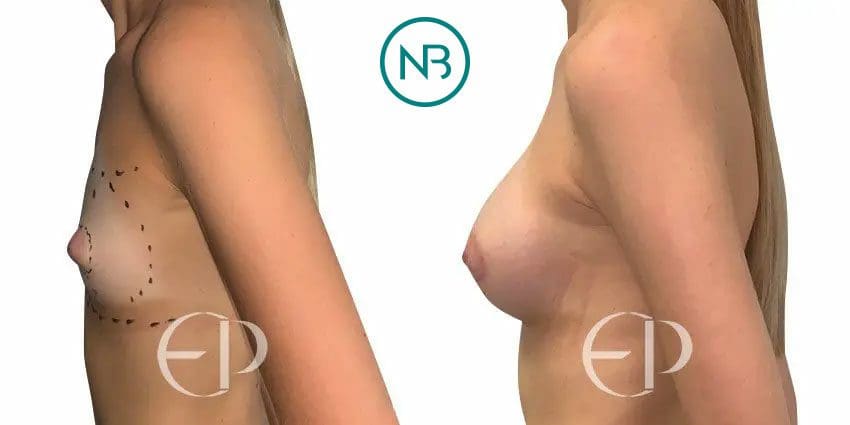Cosmetic Surgery
Tubular / Tuberous Breast
(Tuberous Breast Syndrome Correction Surgery)
Tuberous breast syndrome is an inherited condition in which the breast tissue develops abnormally during puberty and the mammary glands stop growing.
Book a Consultation Today
The condition is sometimes called constricted breasts, tubular breasts, or herniated areolas. It can significantly affect the appearance of the breast.
On this page, we look at:
- The definition of tuberous breast syndrome
- Surgical techniques used to correct tuberous breasts at North Bristol Private Hospital
- The latest advice on breast implants
The definition of tuberous breast syndrome
Tuberous breasts show abnormal development of the breast tissue affecting both size and shape. The areola is enlarged and puffy and the breast lacks tissue beneath the nipple area, creating an elongated or cone-like shape.
One or both breasts may be affected, and the severity of the condition can vary considerably.
Surgical techniques used to correct tuberous breasts at North Bristol Private Hospital
The aim of this surgery is to improve the shape of both of your breasts or to create symmetry where only one breast is affected.
Our surgeons employ a range of techniques to do this, including fat transfer, breast implants, expanders and remodelling of your own breast tissue.
You will discuss the best technique for your breasts with your surgeon at two pre-surgery consultations. All the options will be explained to you in detail, and you will have plenty of time to reflect on your options and ask questions.
The latest advice on breast implants
Since December 2018, regulatory bodies in many countries have made statements on the subject of breast implants after some negative publicity about their effect on health.
The research data is inconclusive and has been interpreted differently by different countries. No country has advised that women with implants have them removed or replaced as a precautionary measure.
However, breast implants are not designed to be lifelong products and will need to be replaced at some point.
The Breast and Cosmetic Implant register (BCIR) collects breast implant data about patients in England and Scotland. The MHRA has a reporting system to gather and analyse information in the UK and is linked to data compiled by public health organisations in other countries.
The most recent advice from MHRA on BIA-ALCL was updated on the 4th of April 2019.
Frequently asked questions
Many of our patients have been embarrassed about their breast development since puberty as they started to notice the difference between their contemporaries’ breast development and their own.
Our surgeons are highly experienced and if you feel that your breasts have not developed correctly, they will be able to offer advice and solutions.
Tuberous breasts share the following features:
- Elongated or cone shape
- Narrow breast base
- A high fold beneath the breast (inframammary crease)
- Puffy, enlarged areola
The excellence of our surgical team at North Bristol Private Hospital ensures that complications are very rare; however, all surgical procedures carry risks.
Bleeding, bruising, infection, scarring, implant displacement or rupture and capsular contracture are all possible after breast reconstruction surgery.
All these risks will be explained to you in detail at your consultations with your surgeon, and you will be asked to sign a consent form.








 View all Google Reviews
View all Google Reviews

 Site by
Site by 